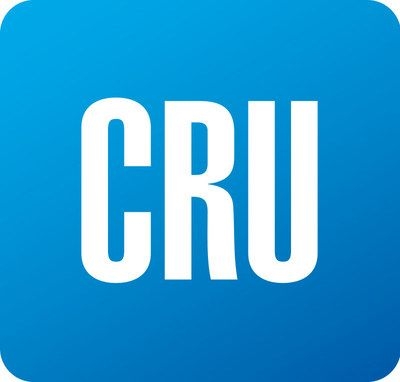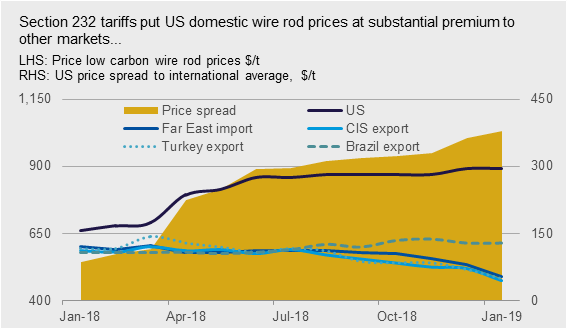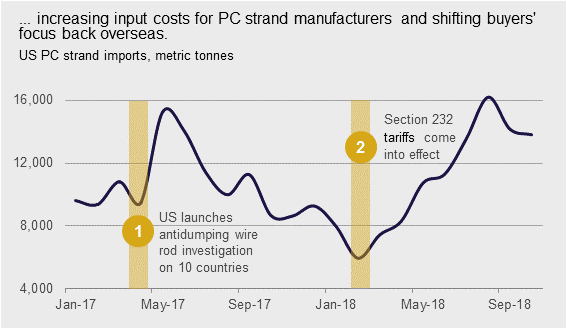Economy

CRU: Steel Tariffs Shift U.S. PC Strand Buyers’ Focus Abroad
Written by Tim Triplett
February 7, 2019
By CRU North America Steel Analyst Ryan McKinley
Since Section 232 tariffs have come into force, U.S. wire rod prices have increased more than other markets. As a result, domestic PC strand (prestressed concrete steel strand) producers have seen costs increase, inviting more competition from abroad.
Higher Prices Affecting Competitiveness
Rising U.S. domestic wire rod prices have increased input costs for PC strand producers. Unlike wire rod, PC strand is not subject to duties under Section 232, leading to an increase in imports as manufacturers from outside the U.S. start to gain a competitive edge. The increase in PC strand imports has correlated strongly with gains in U.S. domestic wire rod prices as domestic manufacturers have no option but to pay a higher cost for their key feedstock, wire rod. Wire rod prices in the U.S. are now trading at a more than four-fold premium to other markets relative to January 2018 (see chart below).

Trade Action has Influenced Buyers Further Down the Supply Chain
Trade action on wire rod appears to be the cause of an increase in PC strand imports, and there are two examples of this since 2017. The first spike in imports came shortly after the anti-dumping investigation of wire rod imports against 10 countries was launched by the U.S. Department of Commerce in April 2017 (see chart). The Section 232 announcement precipitated the second surge, with imports nearly doubling between January and October 2018 (the latest available data). Indeed, the July 2018 peak was the highest level seen in a decade.

What’s Next?
Barring government intervention that specifically targets PC strand, we expect the short-term correlation between a higher U.S. premium on wire rod and increased PC strand imports to persist. Still, this premium may start to erode as downstream steel buyers in the U.S. increasingly seek lower-priced alternatives abroad, weighing on demand for domestically produced wire rod.

Tim Triplett
Read more from Tim TriplettLatest in Economy

Chicago Business Barometer falls back in April, remains in contraction
The Chicago Business Barometer declined in April, reversing March’s gains, according to Market News International (MNI) and the Institute for Supply Management (ISM).

Fewer manufacturers optimistic about the economy
PMA’s April report shows that only 16% of surveyed manufacturers anticipate an increase in economic activity in the next three months (down from 23% in March)

Architecture billings continue to slide in March
Architecture firms said billings continued to decline in March, according to the latest Architecture Billings Index (ABI) released by the American Institute of Architects (AIA) and Deltek.

Beige Book shows concerns about trade policy
Manufacturing was mixed, but two-thirds of districts said activity was little changed or had declined.

New York state manufacturing index drops again in April
Firms were pessimistic, with the future general business conditions index falling to its second lowest reading in the more than 20-year history of the survey
